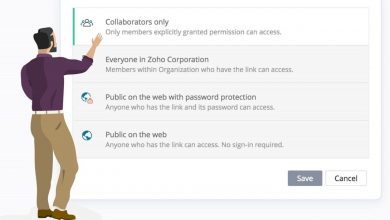Find out how to disable and enable JavaScript in Google Chrome
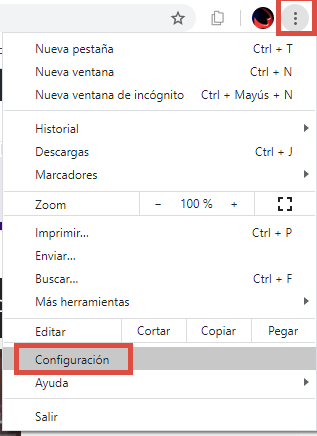
You might be wondering what a web page looks like with or without JavaScript. In Chrome, JavaScript is enabled by default, but you can disable / enable JavaScript in Chrome quickly enough to see what a website looks like without all the moving parts .
Why do you need to disable or enable JavaScript in Chrome?
Modern web pages have many moving parts. For example, almost all online magazines and blogs run advertisements to support web staff and other expenses. With JavaScript enabled, you can see these advertisements and thus provide support.
Most websites require JavaScript to be enabled for all of their ad campaigns to work properly. But if you turn JavaScript off / off in your browser, be it Chrome or any other, you can say goodbye to ads. From now on, you will also stop seeing the other functions they offer. For example, if you've turned off JavaScript, you won't be able to see real-time updates from Twitter, Instagram, or another social network. With JavaScript enabled, you can enjoy all the functionality of web pages.
However, there may come a time when you want to block advertisements on certain web pages or check what a website looks like with JavaScript disabled. In Google Chrome, you can turn it off completely for all websites or for a specific website. If at any time you want to change your mind, you can re-enable JavaScript.
Disable and enable JavaScript in Chrome settings
The easiest way to access the JavaScript options menu in Google Chrome is to place this URL in the Chrome address bar:
chrome://settings/content/javascriptAnother way would be to enter the icon with the three vertical dots in the upper right corner of the browser window. Then click on the “Settings” option.

Then find the “Privacy and Security” section in the left menu and click on “Website Settings”.
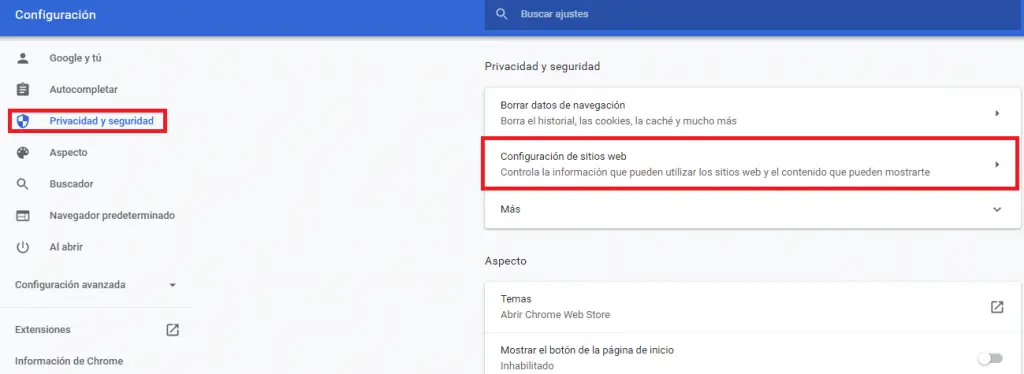
Finally, click on "JavaScript".
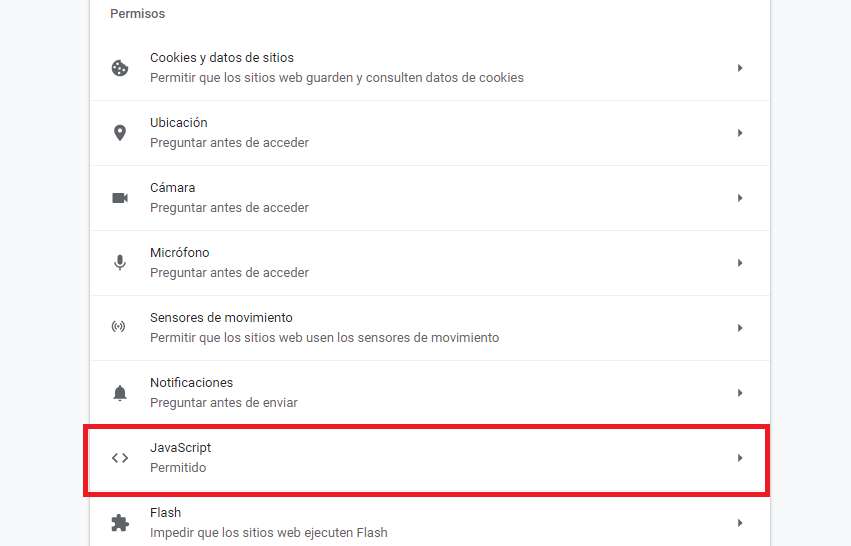
By default, JavaScript is enabled. To turn off JavaScript, move the slider to the left (just click on it) next to the “Allowed (recommended)” option. You can reactivate it by pressing the slider again.

Allow or block JavaScript on specific web pages
As I mentioned before, you can also enable or disable JavaScript for specific websites. To do this, return to the JavaScript settings menu in Chrome by putting the following URL:
chrome://settings/content/javascriptOnce there, you will see the “Block” and “Allow” sections. Select "add" next to block or allow, depending on whether you want to disable or enable JavaScript for a website.
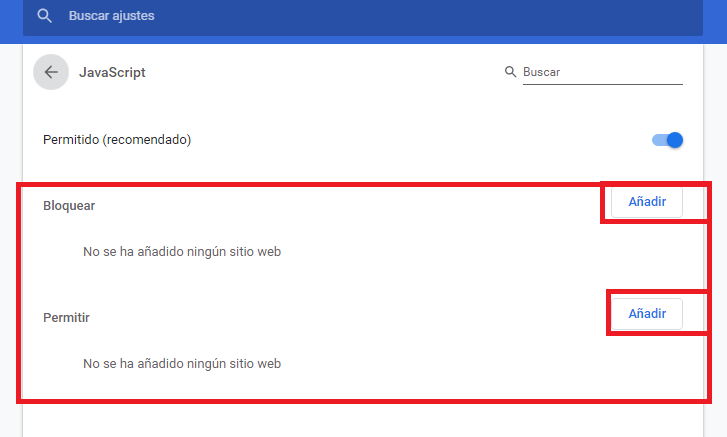
Then the “Add Website” window will appear. Write the web page and press the "Add" button.
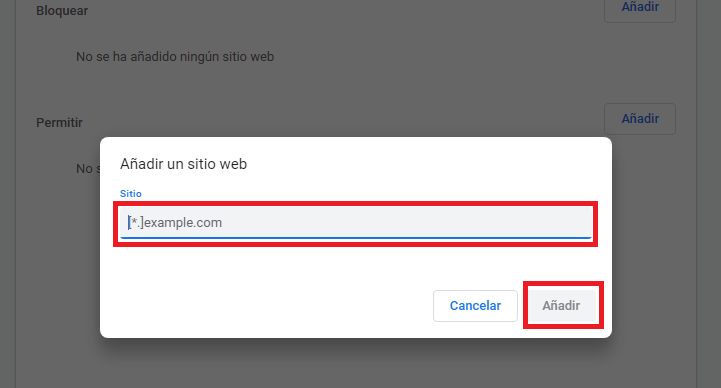
Once the website is entered into your blocked or allowed list, it will appear on the list, which means that the next time you visit that website, JavaScript will be disabled or enabled, respectively.
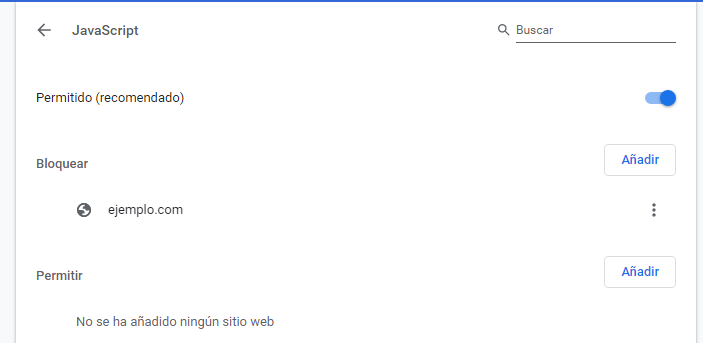
Disable JavaScript with Chrome DevTools for testing
If JavaScript is enabled in Chrome and you want to see what a specific website would look like without having to configure it in Chrome options, you can turn off JavaScript from Chrome devTools when you are... on this website. However, this method is only recommended for testing purposes, as JavaScript will be re-enabled on this website after you close Google DevTools.
On the web page, open DevTools by right clicking somewhere on the web page and select "Inspect".
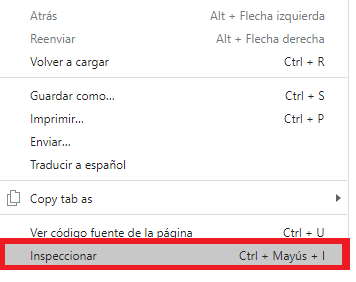
Once you're in DevTools, open the Command menu by pressing the key combination Ctrl + Shift + P on Windows or Command + Shit + P on Mac.
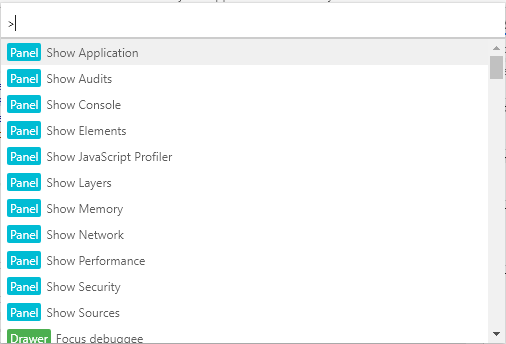
Then scroll down until you find "Disable JavaScript", click on it and press Enter to run the disable JavaScript command.
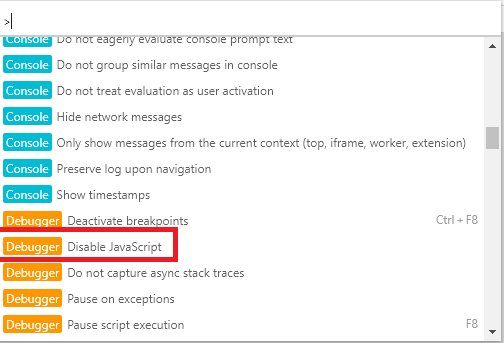
Now you would have disabled JavaScript for this web page. But as I mentioned before, this is only for testing purposes. When you access this website again, it will be activated again.


